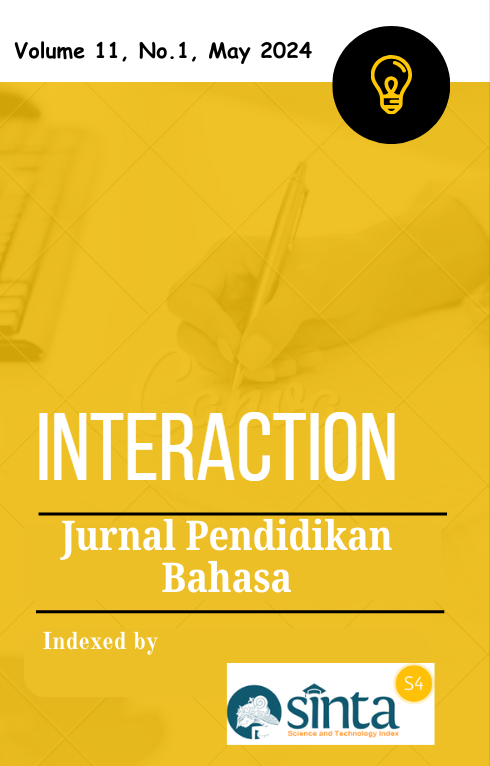Analysis of Gender Representation in "My Next Words": Unpacking First Grade Elementary School Students' Book
Abstract
This study addresses the pervasive issue of gender representation in educational materials, focusing on the elementary school context. The research problem centers on assessing how gender is portrayed in the textbook titled "My Next Words for Elementary School," designed for 1st-grade students. The purpose of the research is to provide a comprehensive analysis of the textbook's content, examining categories such as omission, firstness, occupational visibility, nouns, masculine generic construction, and adjectives, within the framework proposed by Porreca (1984). The methodology employed is a content analysis with a descriptive qualitative design. The study meticulously examines the 13 chapters of the textbook, analyzing both textual and illustrative elements. The findings reveal a balanced gender representation in text and illustrations, fostering an inclusive learning environment. The arrangement of sentences demonstrates an equitable introduction of male and female characters, promoting a sense of equality. The textbook breaks away from traditional gender norms by incorporating diverse occupational roles, ensuring both male and female characters engage in various professions. Nouns related to gender are thoughtfully selected to avoid reinforcing stereotypes, and masculine generic construction is balanced. Adjectives are distributed fairly between male and female characters. In the findings, the study emphasizes the contribution of the analyzed textbook in promoting gender inclusivity and avoiding stereotypes in elementary education. This research has implications for curriculum development and instructional material design, advocating for more inclusive and gender-sensitive educational resources in elementary schools.
Downloads
References
Acar, S. C. (2021). An investigation into gender representations in an English coursebook. Focus on ELT Journal, 3(2), 51–64.
Aguilar, J. S. (2021). Gender Representation in EFL Textbooks in Basic Education in Mexico. Mextesol Journal, 45(1), n1.
Albina, A., Mandalones, A., Layan, R., Calijan, M., Salva, L., Cerbito, E. L., & Pagsuguiron, J. (2023). Gender Inequality Is Real: Dominance of Male Representation In An Elementary English Textbook. JEE (Journal of English Education), 9(1), 43–60.
Anjani, A. F., Hidayat, D. N., Husna, N., & Alek, A. (2022). Gender Awareness in The Cambridge Global English Coursebook 8 Grades: A Discourse Analysis. English Education: Jurnal Tadris Bahasa Inggris, 15(1), 129–147.
Anjarwati, D., Susilo, D., & Rasyidi, A. H. (2023). Gender Representation in English Textbook for 4th Grade Entitled Student’s Book My Next Word for Elementary School. Conference on English Language Teaching, 357–369.
Atay, M., & Danju, I. (2012). Analysis of 1st grade and 5th grade textbooks and primary school student’s views about personal traits in gender role in society. Procedia-Social and Behavioral Sciences, 47, 64–73.
Ayu, M. (2020). Evaluation cultural content on English textbook used by EFL students in Indonesia. Journal of English Teaching, 6(3), 183–192.
Ayu, M., & Inderawati, R. (2019). EFL textbook evaluation: The analysis of tasks presented in English textbook. Teknosastik, 16(1), 21–25.
Demir, Y., & Ertas, A. (2014). A suggested eclectic checklist for ELT coursebook evaluation. Reading, 14(2), 243–252.
Ekowati, D. M., Noni, N., & Atmowardoyo, H. (2021). An Analysis on Gender Representation in Cambridge Checkpoint English Coursebook. Celebes Journal of Language Studies, 88–101.
Hadianto, A. (2022). Gender Differences in EFL Coursebook Used in Islamic School of Bengkulu Province. Journal of English for Specific Purposes in Indonesia (JESPI), 1(1), 30–36.
Julianti, L., & Ikhsanudin, I. (2019). A content analysis of gender bias in when english rings a bell textbooks. International Journal of Learning and Instruction (IJLI), 1(1), 23–30.
Lekawael, R. F. J., & Rafli, Z. (2018). The cultural values in texts of English coursebooks for junior high school in Ambon, Moluccas-Indonesia. Advances in Language and Literary Studies, 9(2), 24–30.
Lucy, L., Demszky, D., Bromley, P., & Jurafsky, D. (2020). Content analysis of textbooks via natural language processing: Findings on gender, race, and ethnicity in Texas US history textbooks. AERA Open, 6(3), 2332858420940312.
Nisak, W. K., Furaidah, F., & Sulistyo, G. H. (2020). Gender Representation in EFL Textbooks for Elementary Schools: A Content Analysis. Jurnal Pendidikan: Teori, Penelitian, Dan Pengembangan, 5(3), 408–413.
Ozer, D. A., Karatas, Z., & Ergun, O. R. (2019). Analysis of gender roles in primary school (1st to 4th Grade) Turkish textbooks. Eurasian Journal of Educational Research, 19(79), 1–20.
Parham, F. (2013). Gender Representation in Children’s EFL Textbooks. Theory & Practice in Language Studies, 3(9).
Porreca, K. L. (1984). Sexism in current ESL textbooks. TESOL Quarterly, 18(4), 705–724.
Saraswati, N., & Ayu, R. S. (2021). Sexist Language Showing Gender Stereotypes as Depicted In Efl Textbooks. UC Journal: ELT, Linguistics and Literature Journal, 2(2), 119–132.
Triyaswati, H., & Emaliana, I. (2021). Equal Gender Representation in Efl Instructional Materials During Emergency Remote Learning. International Journal of Humanity Studies (IJHS), 5(1), 109–119.




.png)



22.png)
